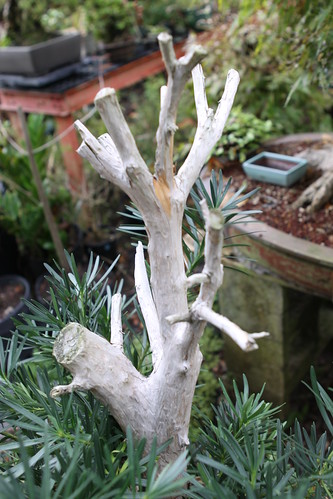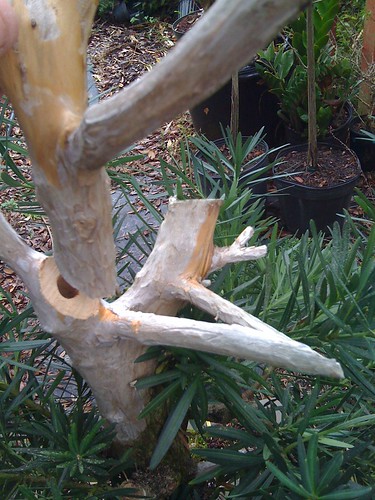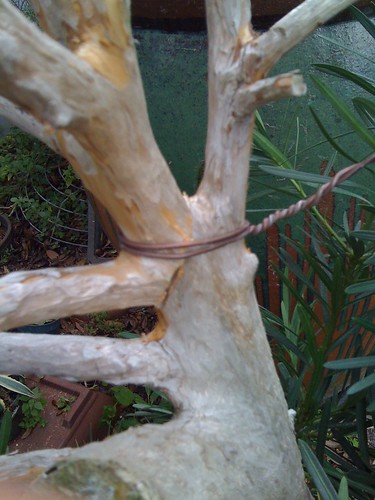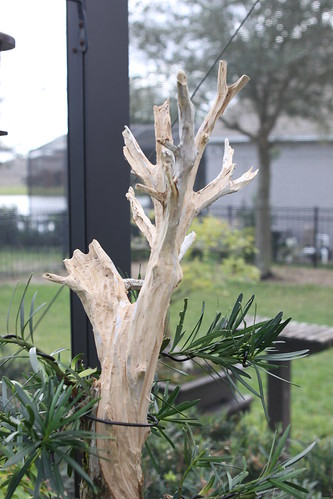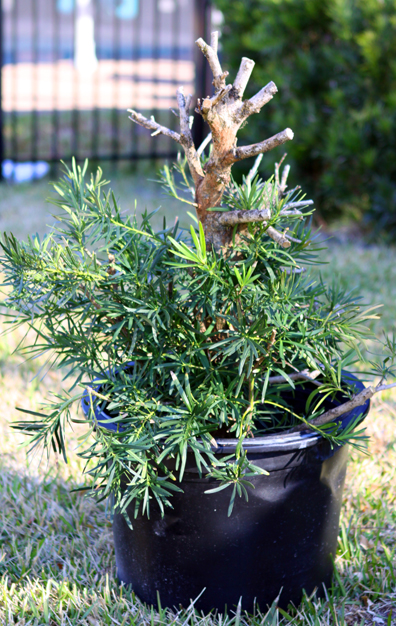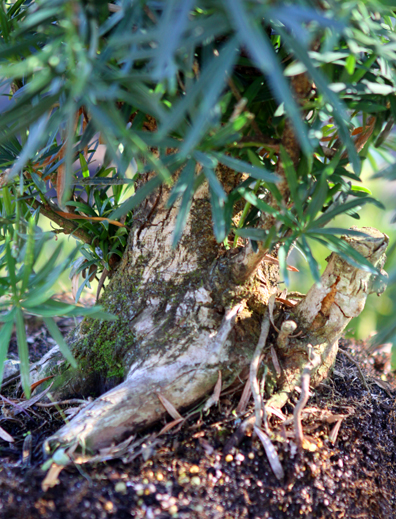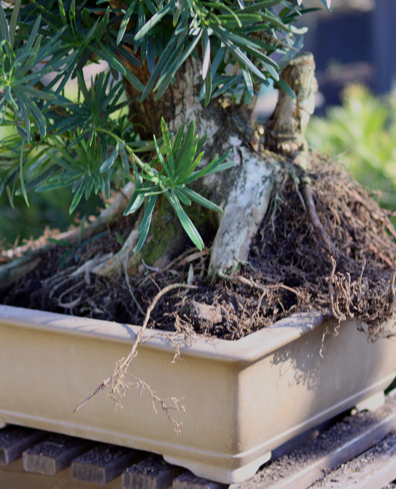I wrote the following article for the Bonsai Societies of Florida Magazine, published in 2009 regarding the safe use of Lime Sulfur. However recently I posted a video as well, and I wanted to bring the two of them together on Orlando Bonsai.
A great way of creating drama in a Bonsai is through the creation of jins (stripped branches) and Shari (carved trunks). By exposing deadwood the Bonsai artist can bring on the appearance of advanced aging of a tree, and add more interest. In order to enhance the jins and shari a chemical/pesticide named Lime Sulfur (also Lime Sulphur) is applied. However this is no ordinary chemical compound.
In fact the MSDS (Material Safety Data Sheet) that accompanies this stuff is enough to make even the most seasoned Bonsai Artist run for the hills, or at least it should. In addition to its foul “rotten egg” smell, it is a corrosive skin irritant (inflammation and blistering), a corrosive eye irritant (can result in corneal damage or blindness) and with severe over-exposure or ingestion may even be fatal.
However when used properly the benefits are enormous. In addition to the great whitening effect that Lime Sulfur creates on exposed wood, it works as a preservative, a pesticide, a fungicide, and a strong sterilizer.
For Bonsai Lime Sulfur is to be applied outdoors with a soft brush directly to the exposed wood. I specify a soft brush because a stiff brush can cause the compound to flick off the ends which may spatter on skin or the eyes. To aid in reducing exposure to Lime Sulfur some precautions should be taken. Long sleeve shirts should be worn, along with eye protection (glasses or goggles), and rubber gloves.
Applying Lime Sulfur is pretty simple and is easy as painting the exposed wood. For best results apply on a hot sunny day when it is not forecasted to rain. Usually the first coat can be done in May – June and the second coat a couple months later in the July- August timeframe. Once applied place the tree in direct sunlight so the Lime Sulfur can soak in and dry. When correctly applied the color of the compound will turn to a light chalky yellowish color. This color will remain until rinsed away by watering or rain on subsequent days.
Some times harder woods (Buttonwoods, Junipers, etc.) will not absorb right away, and the Lime Sulfur will “bead” on the wood surface. In these cases it is better to spray the entire tree with water and then let it set for about 15 minutes before applying. The presoak will allow for better absorption of the Lime Sulfur. However the extra water will also cause the Lime Sulfur to “run” a bit easier, therefore apply slowly so that it does not drip down the tree on to the bark, cambium or roots. I generally place a cloth over the soil to absorb any drips or runs during application. Drips on exposed leaves will result in bad burns to the leaves. In order to avoid absorption of the Lime Sulfur into the plant I remove any leaves that come in contact with the chemical.
In the years that follow the whitened wood will sometimes dull, or begin to cover with algae or moss. At which time additional coats of Lime Sulfur may be applied. However many times a simple spray of a White Vinegar (applied full strength) will be enough to restore the deadwood back to its original white appearance.
Please keep in mind that Lime Sulfur is a great tool for Bonsai when used properly. However this chemical compound is dangerous and must be handled, stored and applied with the greatest of care. Each of the components in itself is harmful and once combined the danger increases. Take the time to read the labels on your specific brand, or search for it on the Internet
Good luck and happy Bonsai!





